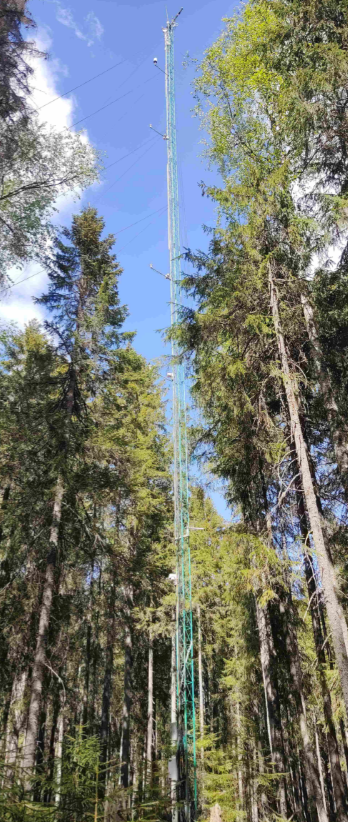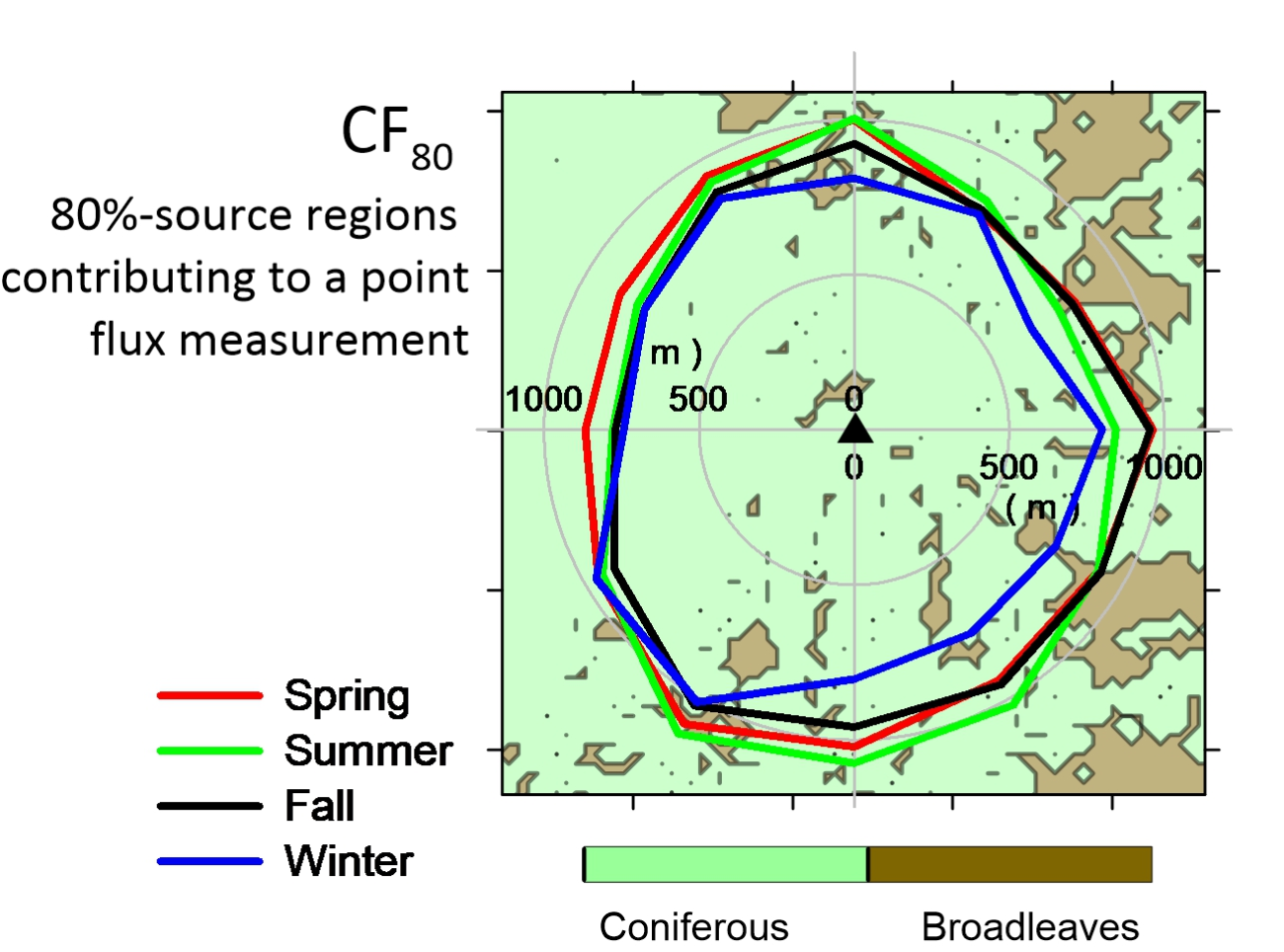Energy and mass exchange between terrestrial ecosystems and the atmosphere is significantly influenced by modern climate change. Long-term observations of carbon dioxide (CO2) fluxes using eddy-covariance technology are an effective method for studying the impact of environmental variability on the processes of CO2 absorption and emission by various ecosystems. Typically, CO2 fluxes are measured by a sensor at one point above the ecosystem and reflect the integral contribution of all CO2 sources and sinks located upwind of the sensor.

Correct interpretation of the received signal is impossible without determining the area from which the signal arrives at the sensor. Using modeling and experimental data, employees of the Institute of Ecology and Evolution of the Russian Academy of Sciences analyzed this area of influence on CO2 fluxes for a measuring complex located in a sphagnum-blueberry spruce forest in the southwest of the Valdai Hills. The dependence of the area of influence (or area of signal formation) on the season and direction of the prevailing wind was studied. The area of influence in the analysis was characterized by two parameters: the distance from which the maximum influence on the measured flow is exerted, and the distance providing 80% contribution to the measured flow. Both parameters showed weak seasonal dynamics due to the predominance of coniferous trees on the territory (quasi-homogeneous forest). However, most of the models used in the analysis to assess the impact zone showed that in summer the area that has the maximum impact on the signal is located 10–15% of the distance typical for winter from the sensor, which is associated with seasonal changes in air flow dynamics. The analysis revealed that small remote areas of broadleaves forests in separate directions from the measuring complex are capable of influencing the impact zone. Areas with low or less dense vegetation also affect the impact area by transforming the air flow passing over them.
The results of the analysis are important for the interpretation of measurements over a quasi-homogeneous forest, allowing for the separation of various sources and sinks that influence the measured CO2 flux depending on the season and prevailing wind direction.

This work was supported by the Russian Science Foundation (grant No. 21-14-00209) and within the framework of the state assignment of the Ministry of Science and Higher Education of the Russian Federation FFER-2022-0002 (topic No. 1022031600002-1-1.6.19)
Link to article:
Sogachev, A.; Varlagin, A. Seasonal Dynamics of Flux Footprint for a Measuring Tower in Southern Taiga via Modeling and Experimental Data Analysis. Forests 2023, 14, 1968. https://doi.org/10.3390/f14101968
